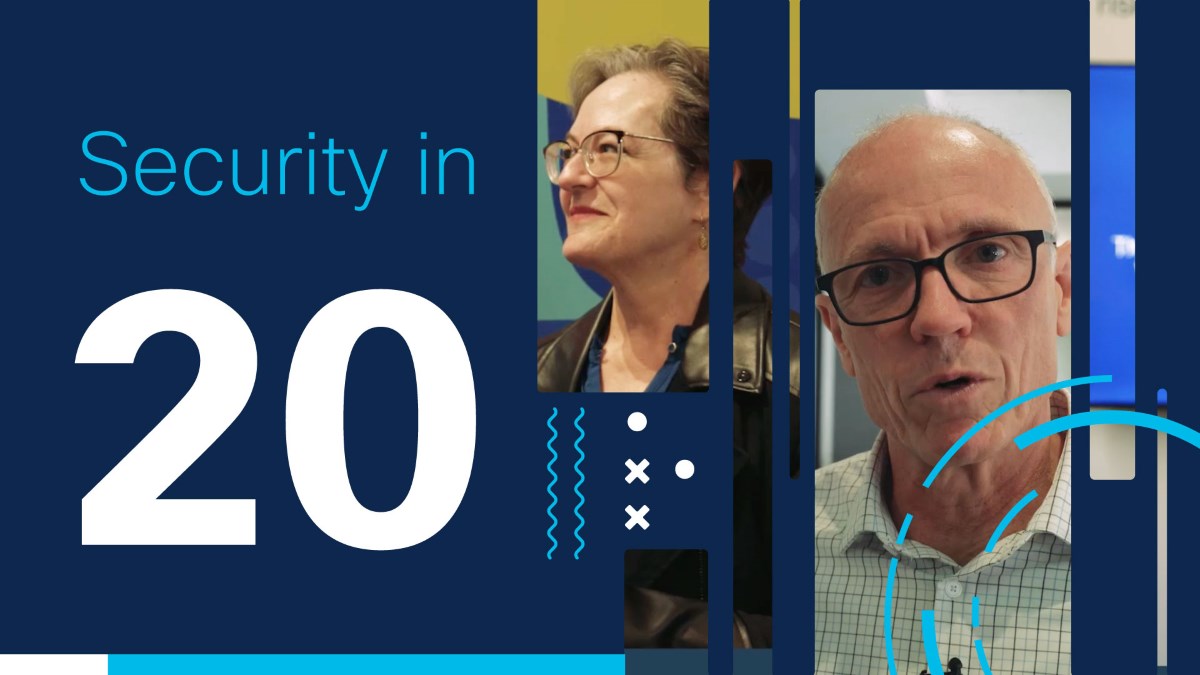Melbourne, Australia – March 20, 2014 — Cisco Live! The National Safety Agency, an Australian not-for-profit research and development organisation and a leader in the development of solutions for emergency management, has worked with Cisco to design a prototype vehicle known as the Emergency Services Integrated Communications (ESIC) vehicle. The ESIC vehicle aims to provide a mobile command and control capability to address all hazards and to link all agencies involved in an emergency situation. The National Safety Agency is the first to extend this type of capability to support the community and leads the world in terms of the magnitude at which it is deploying the ESIC vehicle around Australia.
“Following a series of government reports highlighting the requirement for significant change and improvement in emergency services communications during emergency situations, we decided to embark on the Emergency Services Integrated Communications (ESIC) vehicle proof-of-concept with support from Cisco. The ESIC vehicle showcases technology in an operational context to inspire and assist with the creation of a vision for the public safety sector and other industries with emergency management responsibilities, such as the mining industry,” said Des Bahr, Chair of the National Safety Agency.
In an emergency situation it is imperative that field communications be highly mobile and rapidly deployable. When activated, the ESIC vehicle meets these demands by being a self-contained vehicle in which all technology travels together in close proximity to the incident. Once on-scene, the ESIC vehicle is fully operational within 15 minutes, and trained operators can immediately begin to manage and monitor the event. The events could be fire, flood, tsunami, cyclone, marine pollution, large crowd monitoring, or a terrorist event.
Cisco is supporting the ESIC vehicle by providing a range of technology solutions to help the National Safety Agency achieve its mandate of “Better Information, Better Decisions and Better Outcomes for Safer Communities” by delivering the following benefits:
- Improve incident response communication and decision-making. The primary purpose of the ESIC vehicle is to provide a dispatch and incident response and command centre for emergency services and public safety personnel when dealing with incidents. With Cisco® IP Interoperability and Collaboration System (IPICS), emergency responders using two-way radios commonly known as “handheld radios” can quickly and reliably communicate with people using telephones, mobiles, computers and other devices such as tablets. For example, during an incident response, a central controller can be connected to police, urban and rural firefighters such as the Metropolitan Fire Brigade (MFB) and Country Fire Authority (CFA), the Bureau of Meteorology, State Emergency Service (SES) and other personnel through Cisco IPICS.
In times of emergency, a variety of communication methods is required. Sometimes Instant Messaging (IM) is the best, most immediate form of communication, and other times video is required in order to assess a specific situation. The ESIC vehicle is equipped with high-definition Cisco IP Video Phones and Cisco Unified Communications Manager (UCM), which provides a call control platform to deliver voice, video, messaging, mobility and Web and videoconferencing, allowing all personnel to communicate effectively across a range of devices. Importantly, Cisco UCM also provides real-time availability status of users to enable improved decision-making and faster response times.
- Easily share real-time video with stakeholders and the community. As the ESIC vehicle is generally stationed close to the incident, often high-touch communication is required with stakeholders based remotely. The truck is equipped with high-definition video, Cisco TelePresence®, to allow personnel to communicate with key stakeholders, such as the media, which is particularly important for situations such as bushfires, where the incident could affect the public across a vast “danger zone”. Cisco TelePresence can also be used to communicate, in real time, with other command centres, which is useful in situations where the scale of the incident is widespread and involves a geographically dispersed incident response team.
The ESIC vehicle is also equipped with an IP video surveillance platform and day/night high-definition IP Video Cameras that provide real-time video footage capture and transfer, allowing immediate visual communications to aid emergency responses. By transmitting video from the vehicle’s exterior and interior, the command centre’s awareness and understanding of the situation is increased and extended all the way to the front lines. Video serves as a force multiplier and has become a powerful tool to increase the speed and precision of decision making because of advances in the cameras themselves, video analytics, and integration with other sensors and communications systems.
- A mission-critical network is required to deliver an effective emergency response. The National Safety Agency has outfitted the vehicle with an intelligent wired and wireless network that supports highly secure virtual private network (VPN) tunneling services to back-end resources and firewalls. Cisco Access Points provide high-speed Wi-Fi within and surrounding the ESIC vehicle, ensuring that communication is not hampered by a congested network. There is also potential for public access to Wi-Fi connectivity, so civilians involved in an incident can easily get in touch with concerned friends and family.
- Take advantage of the Internet of Everything to protect the community. The National Safety Agency’s ESIC vehicle is a true use-case of how connecting the previously unconnected can deliver real benefits in terms of public safety. The vehicle incorporates over 30 screens providing comprehensive intelligence and emergency management capability through multiple perspectives, including weather location information via cameras, hydrology data, real-time images from emergency services operators’ helmet-mounted cameras, dashboards with different knowledge sources, multimedia and videoconferencing capabilities between the vehicle and the State Control Centre (SCC). To provide the compute processing for this rapid collection and dissemination of critical information, the vehicle has the Cisco Unified Computing System™ at its core.
With the demand to continually extend new applications to first responders and adopt innovative new approaches to public safety, the National Safety Agency is exploring adding the following services in the future:
- Body-held cameras for real-time transmission of incident images with integrated sensors for blood pressure and breath monitoring
- Unmanned Aerial Vehicle (UAV) devices flying over incident areas for surveillance intelligence
- Google Glass technology for real-time voice activated instructions and image transfer to the vehicle whilst enabling the operator two hand freedom to conduct duties
- At-site triage prior to patients being transported to facilities using on-board Closed Circuit TV (CCTV) and telemedicine connections at major hospitals
“The Internet of Everything brings together people, process, data, and things to make networked connections more relevant and valuable than ever before. The National Safety Agency’s Emergency Services Integrated Communications vehicle is a phenomenal showcase of how public safety can significantly improve the real-time flow of information through a mobile command and communications centre to allow better informed decisions to be made more quickly and ultimately lead to safer Australian communities,” said Ken Boal, vice president of Cisco Australia and New Zealand.
About Cisco
Cisco (NASDAQ: CSCO) is the worldwide leader in IT that helps companies seize the opportunities of tomorrow by proving that amazing things can happen when you connect the previously unconnected. For ongoing news, please go to http://thenetwork.cisco.com.
# # #
Cisco and the Cisco logo are trademarks or registered trademarks of Cisco and/or its affiliates in the U.S. and other countries. A listing of Cisco's trademarks can be found at www.cisco.com/go/trademarks. Third-party trademarks mentioned are the property of their respective owners.


